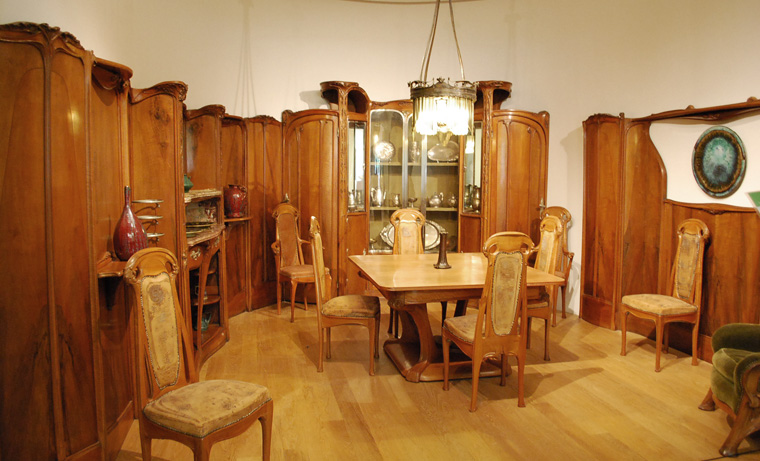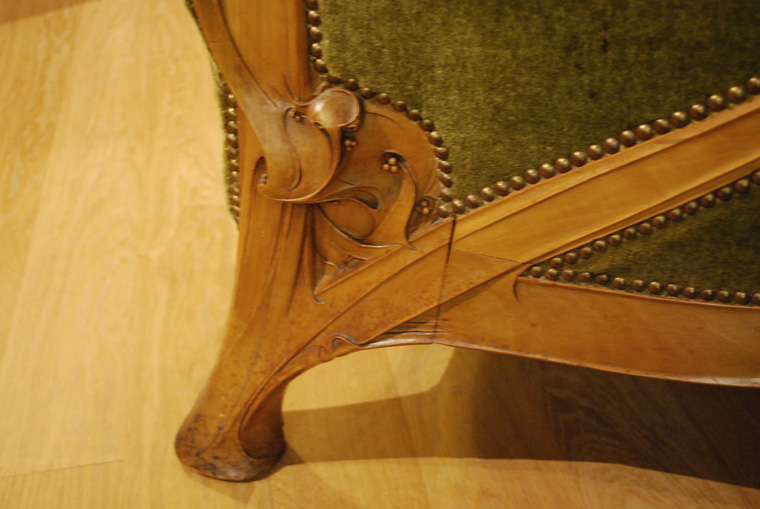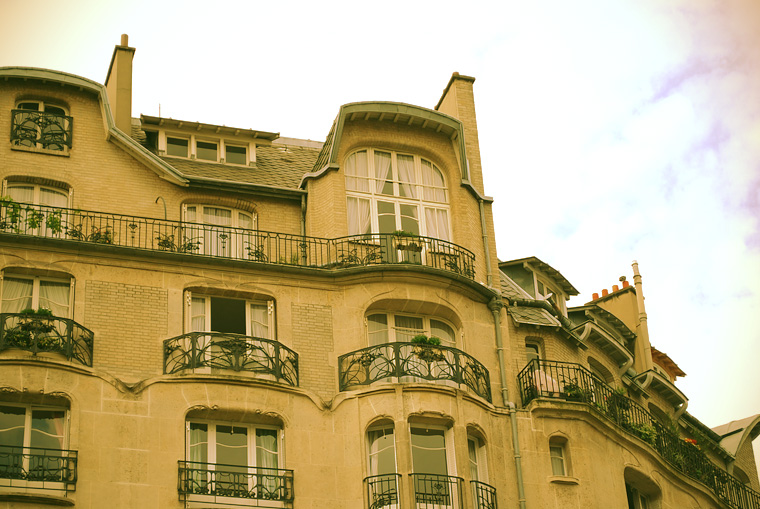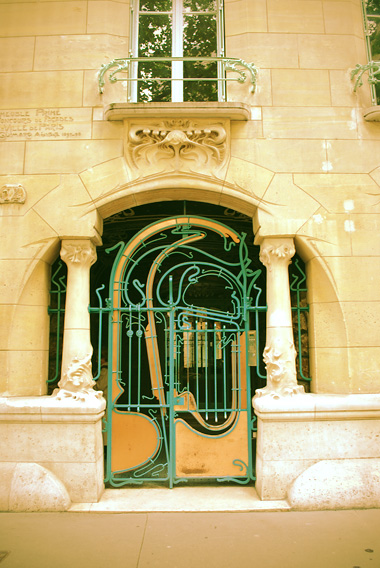Art Nouveau Tour of Paris: Hector Guimard
 In case anybody asks you what Robin's absolute favorite artistic movement is, it's Art Nouveau. Quick summary: AN (1890–1915) is characterized by a Japanese influence, the primacy of the line, and a desire to stylize nature. Très aesthetic, and très reactionary against the stiff French art/architecture of the time. Some of my fave AN artists are Alphons Mucha (famous mostly for ads), Tiffany (lamps), Lalique (jewelry), Toulouse-Lautrec (posters, paintings), and Hector Guimard.
In case anybody asks you what Robin's absolute favorite artistic movement is, it's Art Nouveau. Quick summary: AN (1890–1915) is characterized by a Japanese influence, the primacy of the line, and a desire to stylize nature. Très aesthetic, and très reactionary against the stiff French art/architecture of the time. Some of my fave AN artists are Alphons Mucha (famous mostly for ads), Tiffany (lamps), Lalique (jewelry), Toulouse-Lautrec (posters, paintings), and Hector Guimard.
Who is this Guimard, you ponder. He was a Parisian architect responsible for the crazy Métro entrances of 1900 for which Paris is famous. He's somewhat underappreciated for his work beyond the édicules. He designed a lot of buildings in the 16th arrondissement, some of which were later destroyed by people who just didn't get it. This week, I had a free two hours and I decided to be adventurous and explore the 16th, hunting Guimard's AN buildings!
To the left is Hôtel Guimard, the house he designed for himself and his wife. He conceived everything: the iron balconies, the window shapes, the room layout, and, most impressively to me, the furniture inside. All of it.
Below is la salle à manger, the dining room. It's not actually in Hôtel Guimard anymore — the entire room has been preserved in the Petit Palais, a museum in the middle of Paris.

More after the jump...
Guimard used pear tree wood for all of this furniture, feeling that it had a warm and luminous color. It was also easy to carve the supple, elegant forms he desired. Below, slightly blurry chair detail:

Below: here's an apartment building on Rue de La Fontaine he designed. Check out those balcons — drool! Can you believe that some lucky jerks get to live here?!

 And lastly, to the left is the gate of Castel Beranger, his chef d'œuvre according to some people. I didn't get many good photos of it, since I discovered too late that I'd been on manual focus the whole time and so everything was a little blurry. And I couldn't take more photos because these two dudes unloading a truck were watching me curiously (this was just another random beautiful Paris building to them; I looked like a major creepster). So I'll have to go back sometime.
And lastly, to the left is the gate of Castel Beranger, his chef d'œuvre according to some people. I didn't get many good photos of it, since I discovered too late that I'd been on manual focus the whole time and so everything was a little blurry. And I couldn't take more photos because these two dudes unloading a truck were watching me curiously (this was just another random beautiful Paris building to them; I looked like a major creepster). So I'll have to go back sometime.
In any case, is this not the craziest gate you've seen? Compared to the other boring style Second Empire entryways of Paris, it's dynamite. To me, this verges on Art Deco, the movement that followed Art Nouveau.
That concludes today's Art Nouveau tour. Because it has become an obsession, expect more posts in the future.